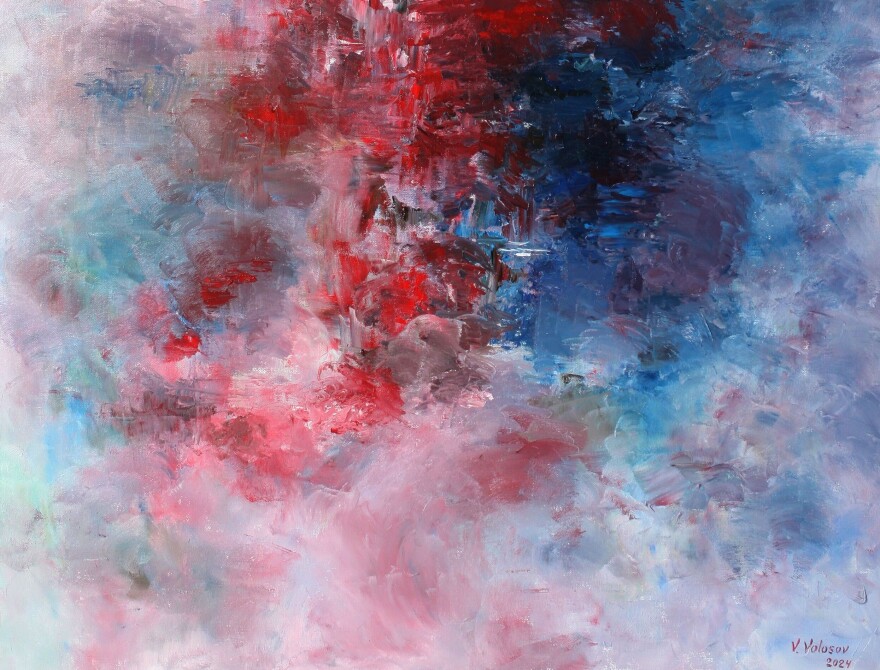The first law of thermodynamics states that energy cannot be created or destroyed.
It only changes form.
What looks like loss is often just transformation: heat into motion, motion into sound, sound into light. Energy never disappears, it simply shifts shape.
The second law tells us that in any closed system, entropy — the measure of disorder or randomness — always increases. In other words, energy spreads out. Order ultimately gives way to disorder.
At first glance, this means the end of things as we know it. The neat becomes messy. The stable collapses into the unstable. Everything falls apart. But entropy is not just decay. It is transformation. It is energy in motion, searching for new ways to arrange itself.
Entropy is not the death of possibility, it is its precondition.
That is where hope lives: in the splintering, in the cracks of the old order, in the wild rush of new arrangements chaos makes possible. For culture and politics, disorder often shakes loose the structures that confine us and opens the door to futures we cannot yet imagine.
In May 2009 I felt that kind of hope. I had been asked to curate two poets for the Obama administration’s first White House Poetry Jam. The young poets, both barely out of high school, stood in the East Room in front of many of the nation’s leaders and most accomplished artists. Nervous but steady, they walked into that historic space with its chandeliers and gilded trim, a room built to project power and permanence, and helped transform it.
It was the same night Esperanza Spalding made her White House debut and Lin-Manuel Miranda performed the first bars of what would later become Hamilton. Several times the entire room leaned forward with the performers, absorbing the spark of change.
As ridiculous as it sounds now, it felt like a glimpse of the hopeful future so many of us had dreamed of. It was not just optics, although the optics mattered. It was substance. For that brief evening, the most powerful house in the country looked and sounded like the venues, classrooms, and communities I knew. It felt like we were on the verge of arriving at a different America, one that was more plural, more creative, more fearless.
But a glimpse is not a guarantee. Not long after, as we now know, the country veered backwards, into the place of “again.” Into a time when the language of democracy is twisted to dismantle democracy itself. When leaders openly “flood the zone” with chaos.
It’s entropy staged and simulated, a counterfeit disorder designed with precision. The tactics and purpose are simple: overwhelm the public with so much misinformation, so many conspiracies, so many competing narratives that the very idea of truth feels impossible to hold.
People grow so tired of sorting lies from facts that many long for order, any order, even if it comes in the form of authoritarianism.
This kind of chaos is not accidental. Flooding the zone is a strategy to weaponize entropy and turn it into fear. The very thing that could open space for creativity and plurality is being used to drive people toward obedience and control. But the energy it takes to manufacture that kind of order leaves an opening.
It’s an opening that independent media must step into. Too often, we media institutions cling to the illusion of order. We preserve it through false equivalence, through both-sideism, through a refusal to say clearly what is broken. We confuse balance with truth. We tidy up the messiness of reality so it can fit neatly into prearranged categories. We maintain order, but order itself is not what we need. In moments like this, order can be a cage.

Independent media has to do the opposite. Our work is not to smooth over the chaos but to help people navigate it. To expose the strategies behind it. To amplify the voices that can map out new pathways. To remind us that diversity is not simply a box to be checked, but that in any ecosystem, diversity is what keeps it healthy and resilient.
A monoculture, no matter how orderly, is fragile. So is consolidation.
A diverse ecosystem can withstand disruption, adapt, and flourish. The same is true for culture. A healthy culture is one where creativity can grow, where identities can move freely, where dissent is not feared but welcomed as a sign of life.
Chaos on its own can exhaust us, but chaos combined with organizing can transform us.
Imagine the power of independent media if we understood ourselves not as scattered fragments fighting for survival, but as a living ecosystem. Each small newsroom, each podcast, each cultural outlet, each public educator is a single node, but together we form a network far more resilient than any single institution could ever be. In a time of chaos, the instinct is often to consolidate, to centralize, and to impose order. But what if we leaned into the dispersed nature of independent journalism and culture? What if we recognized that plurality is not weakness, it is strength?
If independent media organized itself - not into one voice, but into a chorus - we could shift the balance of power. We could flood the zone with truth instead of noise, with stories told from every angle, with representation deep enough to counter disinformation and reductive narratives.
The power of plurality is that no single story can be erased.
When the work is connected, when it is intentional, when it recognizes itself as part of a collective ecosystem, then chaos becomes soil for growth rather than a weapon against us.
We should not waste our energy trying to contain chaos, as if it were something that could be sealed off and put back in order. That is a trap. Containment drains us and leaves the underlying systems untouched. The real work is to organize ourselves within the chaos, to move through it with clarity, to use it as soil for reinvention.
Entropy rules. It always has and always will. The challenge is not whether we can stop it. We cannot. The challenge is whether we recognize it as the opening it truly is.
Whether we can look at disorder not as the end of the story but as the beginning.
And whether we are willing to step into the unknown to find the future that will forever remain unseen until we take the first steps.
—
This KALW Speaks essay is part of Upset the Setup, a three-part series from KALW Executive Director James Kass that challenges institutions and audiences to rethink what public media can be, and to boldly imagine a more pluralistic, equitable, and human future.
Learn more about the future of public media: From A Whisper To A Roar.


